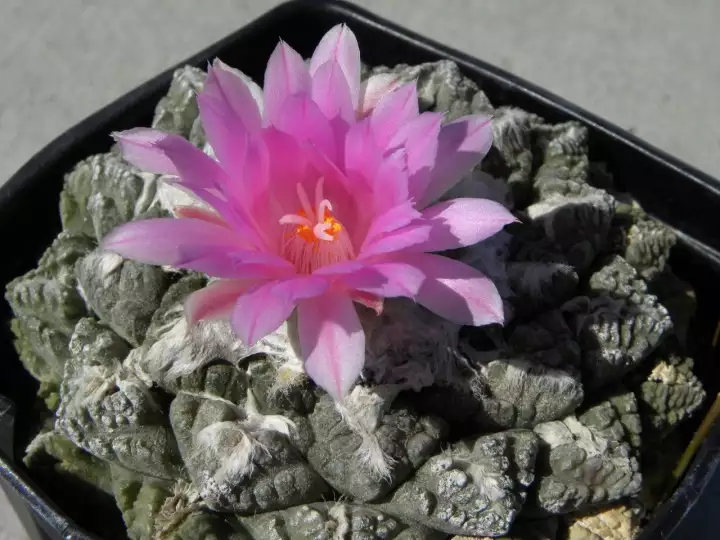Ariocarpus fissuratus SNL157
This photo was taken August 22. The usual peak bloom of the species (in the Big Bend region of West Texas) is during the first half of October, so this plant is flowering very early indeed. This might eventually lead to a population of plants flowering earlier than the main population. The environmental pressures on the population flowering in August could be quite different from those on the October flowering population. These pressures might start changing (by affecting survival) the early population, eventually leading to plants that can no longer interbreed with the late population, since the reproduction of the two populations are separated in time. And so we have a new species, which might eventually lengthen its flowering time to coincide with the original but now distinct population from which the new species derived. So two distinct but obviously related species, derived from one progenitor, now occupy the same habitat and flower at the same time. This is just a cursory speculation on a possible mechanism of species formation. (32/32)
<<Prev
Index
Next>>

